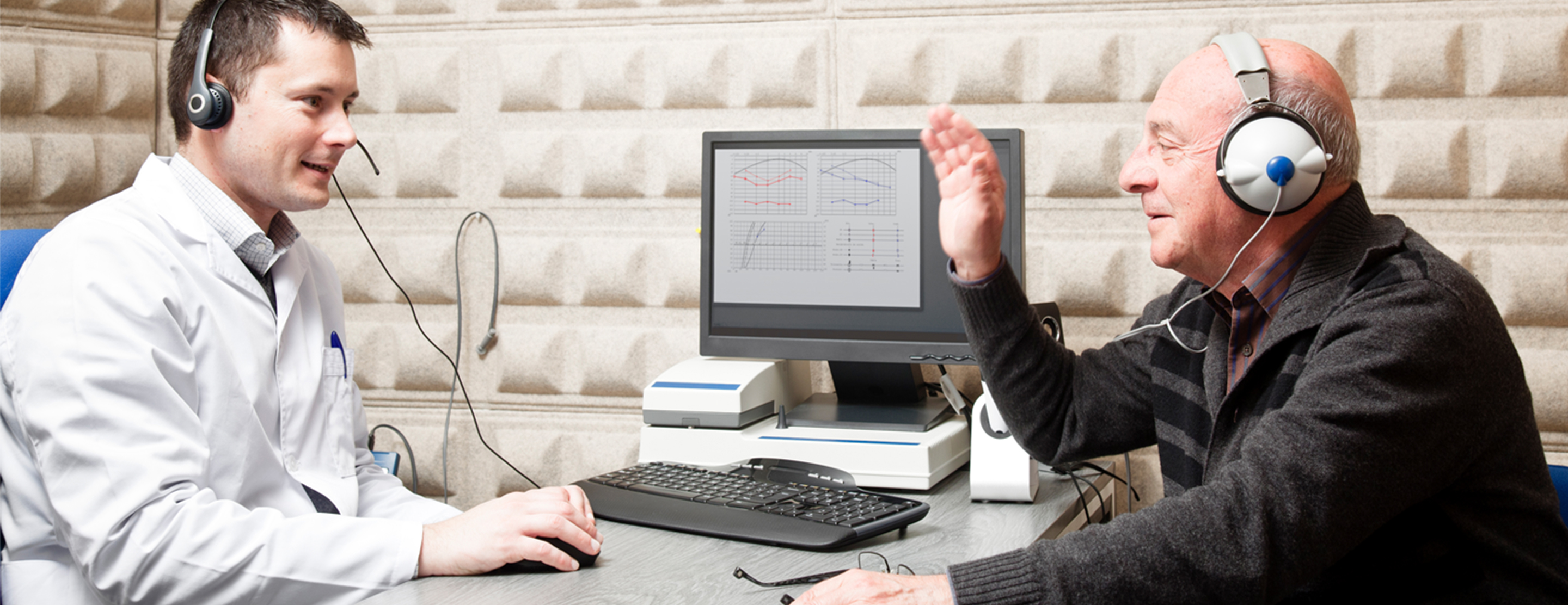Many people have questions about Neuromonics tinnitus treatment and whether they should consider this approach. The Neuromonics acoustic desensitization procedure involves extensive counseling and acoustic therapy.

Neuromonics
Here are some common questions and answers:
What is Neuromonics?
- A pattern of acoustic stimuli designed to retrain the neural pathways
- Customized for your hearing and tinnitus
- Delivered in two stages via a small medical device (Neuromonics processor) resembling an MP3 player and coupled to your ears via comfortable, high-quality earphones
- A treatment program including ongoing personalized support, education and monitoring from an audiologist specializing in tinnitus
- Simpler versions available for individuals who are less severely impacted by their tinnitus
How does Neuromonics Tinnitus Treatment work?
There are a number of key features in Neuromonics Tinnitus Treatment that make it effective:
- Compensation for each individual's hearing profile
- Stimulation of a broad range of frequencies
- Use of music as a medium for treatment
- Provision of education and counseling
- Intermittent exposure to the tinnitus signal
These are designed to create:
- Positive engagement of the limbic system (brain structures involved in emotion, learning and memory) and promotion of relaxation
- An ongoing, efficient desensitization to your tinnitus
How long does treatment take?
Neuromonics Tinnitus Treatment is an acoustic-based treatment that is accompanied by assessment, monitoring, support and education from a specializing audiologist. Completion takes about six months.
How much does the treatment cost?
The cost of the treatment is approximately $5,000, including the counseling visits, follow-up telephone consults and the processor. The initial evaluation of an individual's tinnitus problem is not included. Simpler versions of the treatment are available at a lower cost.
What is involved in the Neuromonics Tinnitus Treatment?
- Initial assessment: Your audiologist assesses your hearing and tinnitus, and determines your suitability for Neuromonics Tinnitus Treatment.
- Following your initial assessment, a Neuromonics processor delivers the neurological stimulation required to treat your tinnitus for two to three hours a day.
- Over the following months, you move through two phases of treatment, with the acoustic treatments adjusted along the way.
- To help you achieve the best results, you receive education and advice from an audiologist.
- Your progress is professionally monitored via recordings in the processor, by regular follow-up phone calls and by clinic appointments with your audiologist.
What are the reported benefits or results?
Neuromonics was developed in Australia over the last 10 years through four clinical trials involving more than 200 individuals with tinnitus. Between 80 and 90 percent of people achieved a substantial reduction in their tinnitus symptoms. Over a period of around six months, patients became less aware of and less disturbed by their tinnitus, even when not using treatment. In addition, many experienced benefits in the early stages while using treatment, such as relief and restored sleep.
Why is music used as a treatment medium?
- Pleasant to listen to
- Beneficial as a therapeutic medium
- Dynamic, therefore allows intermittent stimulation
How can I fit in treatment if I am working?
- Treatment times can be broken up over the day and fitted into travel, lunch or quiet work times to meet the required two to three hours of use per day.
- The acoustic signal is quiet enough to not be disturbing and does not exclude environmental sounds or conversations. You can listen to it during other activities.
- Some people also find the treatment useful when trying to sleep, so some of the listening time can take place in bed.
- The Neuromonics processor is portable and easy to use. It can be slipped into a pocket or handbag.
- Your audiologist will work with you to determine the most suitable times for treatment.
Does the treatment make the tinnitus disappear entirely?
- Not necessarily. The objective of the Neuromonics Tinnitus Treatment is to reduce the amount of time you are consciously aware of your tinnitus and reduce the degree to which it impacts your quality of life.
- Some people have reportedly stated that their tinnitus disappears completely.
- The most common outcome is that people reach a point where their tinnitus may still be present but it no longer disturbs them and they are not normally aware of it.
I have been told there is nothing that can be done for tinnitus. What has changed?
In recent years, the understanding of the causes and contributing factors to tinnitus-related disturbance has improved. The role of the auditory pathways in the brain has now been widely recognized, and these pathways can be targeted with treatment.
Is a wireless or non-headphone version of technology available?
It is not possible to offer treatment with wireless technology, as this is not able to transmit the range and breadth of signals or the required fidelity.
References
Davis, P. B., Wilde, R.A., & Steed, L. (2002a). Clinical Trial Findings of a Neurophysiologically-based Tinnitus Rehabilitation Technique using Tinnitus Desensitization Music. In R. Patuzzi (Ed.), Seventh international tinnitus seminar (pp. 74-77). Fremantle, Australia: University of Western Australia.
Davis, P. B., Wilde, R.A., & Steed, L. (2002b). Neurophysiologically-Based Tinnitus Rehabilitation Using Tinnitus Desensitization Music. In R. Patuzzi (Ed.), Seventh international tinnitus seminar.
UCSF Health medical specialists have reviewed this information. It is for educational purposes only and is not intended to replace the advice of your doctor or other health care provider. We encourage you to discuss any questions or concerns you may have with your provider.






